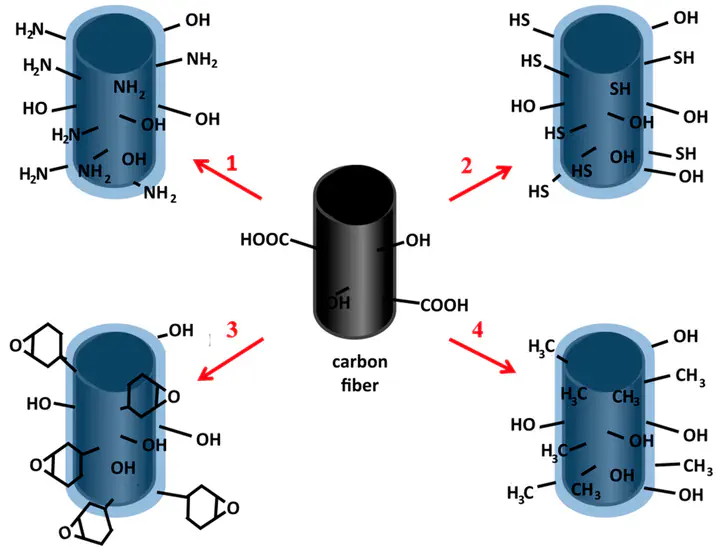Improvement of interaction in a composite structure by using a sol-gel functional coating on carbon fibers
 Scheme of carbon fiber surface functionalization by the sol-gel coatings (with numbers compatible with numbers of coatings described in manuscript).
Scheme of carbon fiber surface functionalization by the sol-gel coatings (with numbers compatible with numbers of coatings described in manuscript).Abstract
The modification of carbon fibers for improving adhesion between fibers and an epoxy resin in composite materials has become the focus of attention. In this work the carbon fiber coating process has been devised in a way preventing the stiffening and clumping of fibers. To improve interactions between coated fibers and a resin in composites, four types of silica coatings with different organic functional groups (3-aminopropyl–coating 1, 3-mercaptopropyl–coating 2, 2-(3,4-epoxycyclohexyl) ethyl–coating 3, methyl–coating 4) were obtained. Scanning electron microscopy (SEM) and atomic force microscopy (AFM) were used to distinguish the changes of a carbon fibers surface after coating deposition. The thickness of the obtained coatings, including the diversity of thickness, was determined by transmission electron microscopy (TEM). The increase in surface free energy (SFE) of modified fibers, including the distinction between the polar and dispersive parts, was examined by wettability measurements using a tensometric test. The developed coating preparation process allowed to cover fibers separately with nanoscale silica layers, which changed their morphology. The introduction of organic functional groups resulted in surface free energy changes, especially an increase in specific polar surface energy components.